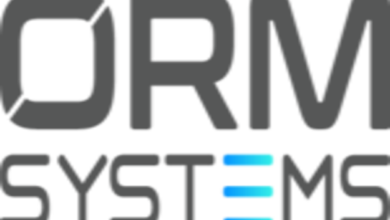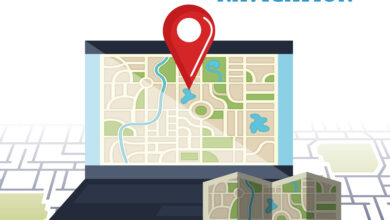How to Fix The Driver May Be Corrupted or Missing?
‘Code 39’ error or we should say, “Windows can not load the device driver for this hardware. The driver may be corrupted or missing” is a common Windows problem. You might’ve faced this problem some time or other while working on your Windows computer. Often hardware failure/malfunction or Windows Registry problems are why this issue arises. While less frequent, damaged or corrupted driver-related files can also be culprits. Fortunately, these issues are typically easy to resolve. Let’s explore some effective solutions.
Today, in this blog we are going to witness how to fix a corrupt driver, how to update drivers efficiently, and how to use driver updater software to keep your Windows computer as new.
So, let’s get started.
Methods to Fix The Driver May be Corrupted or Missing Issue on Windows
Before pursuing more complex methods, let’s go through some preliminary checks that could resolve the issue in no time –
- First, ensure that everything is plugged in and properly fixed. In case of a loose connection of cables with devices, this can lead to driver issues.
- This may seem too simple but a restart can sometimes correct temporary bugs causing the error message.
- Scan your system for malware with trusted antivirus software. The virus infection can lead to corrupt or deleted driver files which can result in this error message.
Method 1: Use Hardware and Device Troubleshooter
If you are still facing the issue, compatibility problems might be the culprit. Windows offers a built-in hardware troubleshooter to diagnose and fix such conflicts. Here’s how to use it –
Step 1: Press the Windows and R keys together to open the RUN dialog box.
Step 2: Now, type this exact command and press the Enter key – msdt.exe -id DeviceDiagnostic.
Step 3: When the troubleshooter page is open, click on the Next button(from the right-bottom corner) to start the troubleshooter.
Method 2: Repair Corrupted System Files
As we mentioned above this problem can be caused by corrupted driver-related files. Here you can fix them by using some commands within the Command Prompt utility.
As previously mentioned, corrupted driver-related files may be the source of this issue. To resolve them, utilize the Command Prompt utility and a few commands.
Step 1: Press the Windows key and type ‘command’ in the search bar.
Step 2: Now tap on the Run as administrator option to open the Command Prompt window.
Step 3: Type this command and press the Enter key – sfc /scannow.
Step 4: Now type and execute the following commands one at a time and press the Enter key after each command:
DISM /Online /Cleanup-Image /CheckHealth
DISM /Online /Cleanup-Image /ScanHealth
DISM /Online /Cleanup-Image /RestoreHealth
Once all is done, close the Command Prompt window and restart your computer.
Method 3: Update Device Drivers
If the issue persists, the corrupted or faulty driver is likely the reason behind it. To confirm this, inspect the driver’s status and consider updating it. Follow the steps below-
Step 1: Press the Windows key and type ‘device manager’ in the search bar.
Click on the Open.
Step 2: Here, you will have all your hardware listed in alphabetical order. Find out which driver is causing the problem.
Step 3: Expand the relevant device category in Device Manager and double-click the driver.
Step 4: Navigate to the “General” tab within the Properties window. Look for messages indicating a functioning driver, or potential issues like driver corrupted or missing.
Step 5: If an error is detected, right-click the driver and select “Update Driver” to start the update process.
However, we all know that updating device drivers manually can be time-consuming and hectic. Only some have the patience or time to do it. To rule out this issue and update your device drives smoothly and easily we suggest you use a driver updater for Windows, Advanced Driver Updater. This software simplifies the process by:
- Automatically scan your system for outdated drivers.
- Providing easy-to-follow instructions for updates.
- Often offering additional features like driver backups for added protection.
Follow the steps below –
Step 1: Download and install the Advanced Driver Updater software.
Step 2: Once the installation is finished, open the application and click on the Start Scan Now button.
Step 3: Let it scan your entire PC for outdated and corrupted drivers.
Step 4: Once the scan is finished, it will list all updated and corrupted drivers.
Step 5: Click on the Update driver button, placed right beside each mentioned driver. Or you can update them all in one go by tapping on the Update All button.
Once the process is finished, restart your PC/laptop to verify if the ‘The Driver may be corrupted or missing’ issue is resolved.
Method 4: Replace the Faulty Hardware
If the above problem-solving methods do not help, there is a probability that the problem is caused by hardware. It means you may have to replace the faulty component. To see if this is true, try using another device or take your computer to a professional. In case your device still has a warranty, contact the manufacturer about your possible support options. Otherwise, they might be willing to help you with repairs at a cost.
Prevention is Key: Maintaining Your Drivers in Perfect Shape
The following preventative measures can help avoid driver problems in the future:
- Keep Windows Updated: Microsoft frequently issues updates, which quite often have driver patches.
- Install Drivers Only from Trusted Sources: Trust only the manufacturer’s site or a recognized software company’s official driver updater tool.
- Create System Restore Points: Before you go ahead and do anything drastic to your computer, you must make a restore point.
Conclusion
So, this is how you can fix the driver that may be corrupted or missing on your Windows PC. The above-mentioned methods will help you solve the problems caused by corrupted or missing drivers and ensure that your hardware performs at its best. If you find this guide helpful then share it with your family and friends. Also, we want to know your experience and if you have any suggestions or tips regarding this topic, tell us in the comments below.



